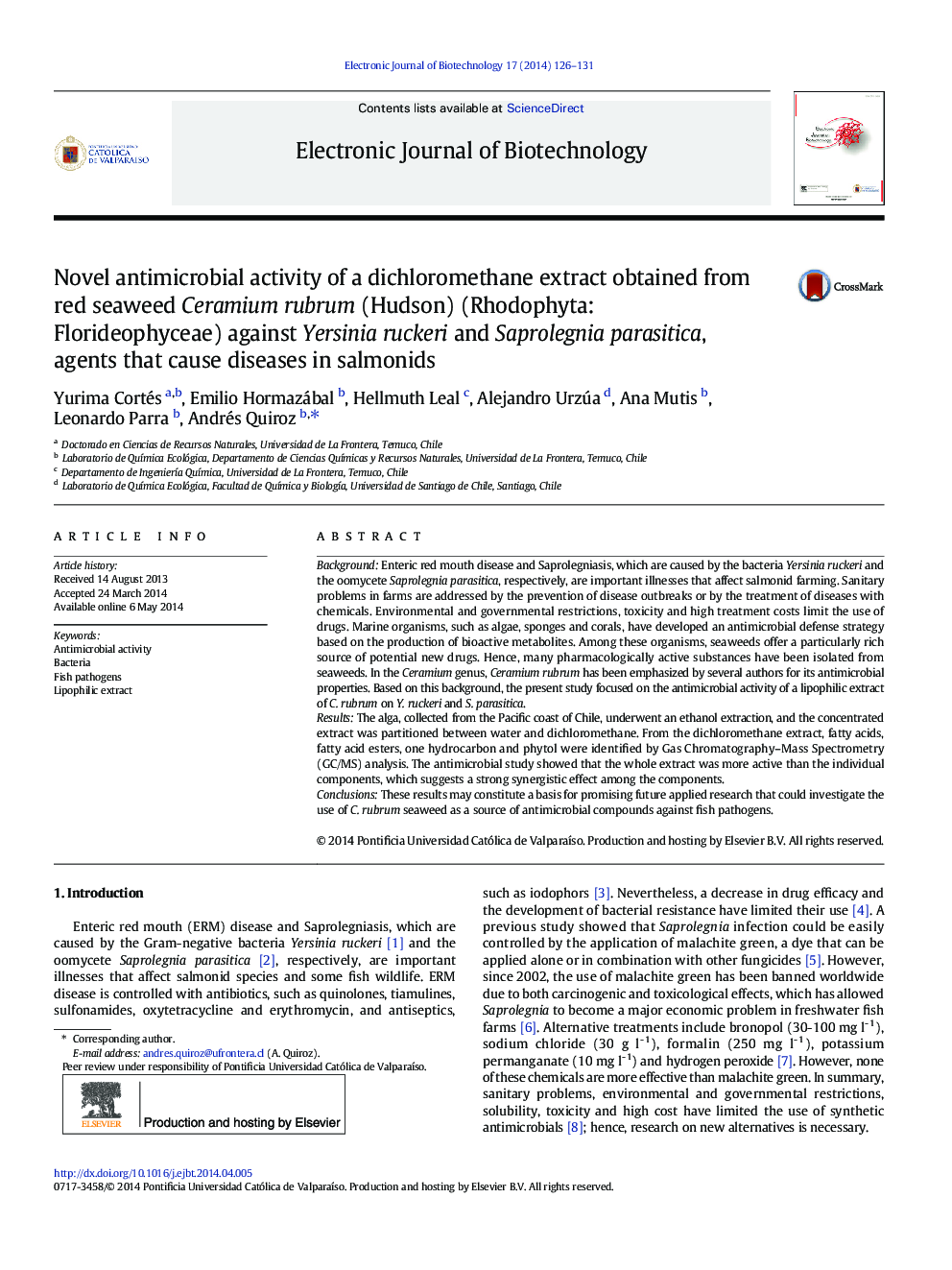| Article ID | Journal | Published Year | Pages | File Type |
|---|---|---|---|---|
| 200973 | Electronic Journal of Biotechnology | 2014 | 6 Pages |
BackgroundEnteric red mouth disease and Saprolegniasis, which are caused by the bacteria Yersinia ruckeri and the oomycete Saprolegnia parasitica, respectively, are important illnesses that affect salmonid farming. Sanitary problems in farms are addressed by the prevention of disease outbreaks or by the treatment of diseases with chemicals. Environmental and governmental restrictions, toxicity and high treatment costs limit the use of drugs. Marine organisms, such as algae, sponges and corals, have developed an antimicrobial defense strategy based on the production of bioactive metabolites. Among these organisms, seaweeds offer a particularly rich source of potential new drugs. Hence, many pharmacologically active substances have been isolated from seaweeds. In the Ceramium genus, Ceramium rubrum has been emphasized by several authors for its antimicrobial properties. Based on this background, the present study focused on the antimicrobial activity of a lipophilic extract of C. rubrum on Y. ruckeri and S. parasitica.ResultsThe alga, collected from the Pacific coast of Chile, underwent an ethanol extraction, and the concentrated extract was partitioned between water and dichloromethane. From the dichloromethane extract, fatty acids, fatty acid esters, one hydrocarbon and phytol were identified by Gas Chromatography–Mass Spectrometry (GC/MS) analysis. The antimicrobial study showed that the whole extract was more active than the individual components, which suggests a strong synergistic effect among the components.ConclusionsThese results may constitute a basis for promising future applied research that could investigate the use of C. rubrum seaweed as a source of antimicrobial compounds against fish pathogens.
